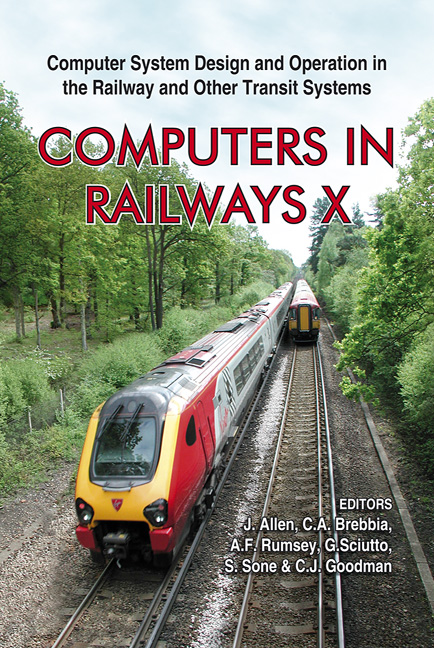On Enhanced Tilt Strategies For Tilting Trains
Price
Free (open access)
Transaction
Volume
88
Pages
10
Published
2006
Size
436 kb
Paper DOI
10.2495/CR060821
Copyright
WIT Press
Author(s)
B. Kufver & R. Persson
Abstract
Many railways have taken tilting trains into operation on lines with horizontal curves with small radii. Tilting trains have vehicle bodies that can roll inwards, thus reducing the lateral acceleration perceived by the passengers. Hence, tilting trains can run through curves at an enhanced speed. However, too much tilt can cause motion sickness among sensitive passengers. The tilt motions, generated by computer-controlled actuators should be optimised with care, taking the local track geometry and actual train speed into account. This paper presents tilt algorithms aimed at balancing conflicting objectives. Furthermore, the paper discusses the usefulness of route files (track geometry data) onboard the train and possible positioning systems. Keywords: tilting train, tilt algorithm, tilt strategy, alignment, cant, passenger comfort, motion sickness. 1 Introduction The idea of tilting trains on lines with curves with small radii was discussed already during the 1930s [1, 2]. Tilting trains have vehicle bodies that can roll inwards, thus reducing the lateral acceleration perceived by the passengers. Hence, tilting trains can run through curves at an enhanced speed. Nowadays, it is a mature technology that many railways have taken into revenue service. However, experience shows that tilting trains can cause motion sickness among sensitive passengers [3–11]. The mechanisms behind motion sickness are not fully understood, but there is evidence that high roll velocities, generated by steep superelevation ramps in the tracks and by a high compensation ratio in the tilt system, contribute to the onset of motion sickness. Hence, too little tilting will cause discomfort caused by high lateral acceleration, while too much tilting may provoke motion sickness.
Keywords
tilting train, tilt algorithm, tilt strategy, alignment, cant, passenger comfort, motion sickness.





